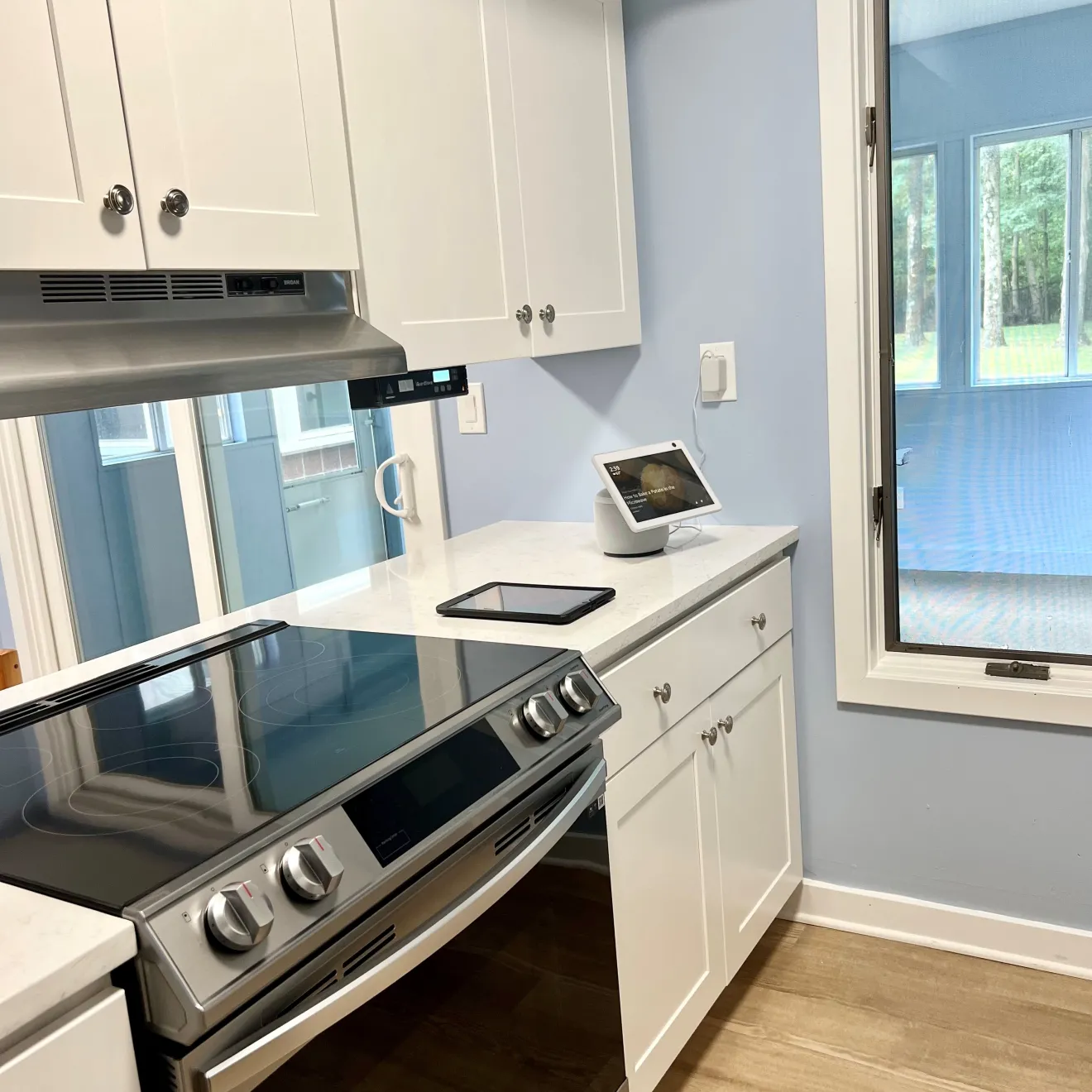Empowering Lives through Assistive Technology
- News

Tools That Can Increase Independence
When you hear about assistive technology for individuals with intellectual and developmental disabilities(I/DD), what do you think of? Mobility devices? Communication devices? These are both types of assistive technology, but there’s so much more that’s now available to individuals with I/DD.
Assistive technologies have significantly evolved in recent years, providing crucial support and empowering individuals with I/DD. These technologies facilitate greater independence, enhance quality of life and enable individuals to participate more fully in their communities. And through the Ohio Department of Developmental Disabilities, individuals with IO and Level One waivers are allotted $5,000 of their waiver money to go toward assistive technology per year, making assistive technology more accessible than ever.
From smart kitchen appliances to advanced smart door locks, the integration of assistive technologies into daily living environments has been transformative for many individuals, and the assistive technology team at Boundless has been instrumental in matching clients with the best technology for them.
One of the most impactful areas where assistive technologies make a difference is in the kitchen. Abby Harris, a speech pathologist who works on the assistive technology team at Boundless, explained, “A lot of times we have families who want their individual to be able to cook more, or those individuals want to be able to cook for themselves, but they’re worried about them walking away from the oven.” Smart kitchen appliances are designed with safety and adaptive features in mind, like an oven that is set to automatically shut off after a certain amount of time or that can be turned off remotely.
Other smart kitchen appliances that many find helpful are microwaves that can be connected to Amazon’s Alexa virtual assistant and pantry shelf sensors that can help build a shopping list.
Assistive technology in the bathroom can also make a huge difference for those seeking more independence. From showerheads that can visually indicate if the water is too cold, too hot or just right to automatic soap dispensers, whatever an individual needs help with, there’s likely a technological solution.
Inside the house isn’t the only place where assistive technology plays a role, though. “We have a lot of individuals that when they get home from their day, they want to be able to let themselves in. Mom and Dad are at work, but a key might be too hard,” Harris said. Individuals in this situation can be helped with smart locks. Some smart locks use a fingerprint sensor instead of a key, others use a code and others still can be unlocked remotely by a loved one, so there truly is a solution for everyone. For other individuals, if they physically aren’t able to open a door on their own due to mobility challenges or fine motor skills, an automatic door opener can be life changing.
The benefits of assistive technologies extend beyond specific devices, too. By simplifying complex tasks, assistive technologies empower individuals with I/DD to perform daily activities independently. Some technologies are specifically designed to coordinate multiple tasks to aid in holistic independence.
“If we have an individual who needs help following routines or multi-step directions, we can connect most of our smart technology electronically to these Flic buttons. So, an example is an individual who is going to bed by themselves might have trouble following a routine. We can set up a routine for them that when they push this button, all the smart locks in their house will lock, their white noise will turn on and their lights will turn off,” Harris explained. Even Amazon Alexa devices can be used for far more than most people are aware of. It’s not just for playing your favorite song, it can be programmed to help with hundreds of tasks.
Assistive technologies also benefit caregivers by providing tools that simplify monitoring and reduce the burden of constant supervision. This enables caregivers to focus on providing emotional support and engaging in meaningful activities with their loved ones.
“It kind of depends where you want that independence,” Harris said. There are countless options that can solve many challenges. Whether it’s as simple as needing an automatic medication dispenser or as complex as needing a house full of automations, there is a solution for everyone. Harris continued, “There’s such a wide range of assistive technology, from low tech, like adaptive spoons, to extremely high tech, like a robot that could feed you, and a lot of people can benefit from various kinds of technology.”





